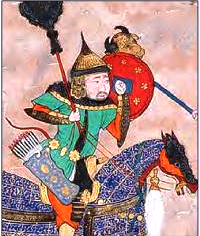Houman on:
[Wikipedia]
[Google]
[Amazon]
 Houmān not to be confused with Houman, ( fa, هومان) is one of the most famous
Houmān not to be confused with Houman, ( fa, هومان) is one of the most famous
 Houmān not to be confused with Houman, ( fa, هومان) is one of the most famous
Houmān not to be confused with Houman, ( fa, هومان) is one of the most famous Turanian {{Short description, List of groups of people
Turanian is a term that has been used in reference to diverse groups of people. It has had currency in Turanism, Pan-Turkism, and historic Turkish nationalism.
Many of the uses of the word are obsolete. ...
heroes in Shahnameh
The ''Shahnameh'' or ''Shahnama'' ( fa, شاهنامه, Šāhnāme, lit=The Book of Kings, ) is a long epic poem written by the Persian poet Ferdowsi between c. 977 and 1010 CE and is the national epic of Greater Iran. Consisting of some 50,00 ...
, the national epic
A national epic is an epic poem or a literary work of epic scope which seeks or is believed to capture and express the essence or spirit of a particular nation—not necessarily a nation state, but at least an ethnic or linguistic group with as ...
of Greater Iran
Greater Iran ( fa, ایران بزرگ, translit=Irān-e Bozorg) refers to a region covering parts of Western Asia, Central Asia, South Asia, Xinjiang, and the Caucasus, where both Culture of Iran, Iranian culture and Iranian langua ...
. Houmān is famous for his bravery, loyalty, and chivalry, such that even Iranians who are longtime enemies of Turanians admire his personality. He is a descendant of Tur, a son of Viseh and brother of Piran
Piran (; it, Pirano ) is a town in southwestern Slovenia on the Gulf of Piran on the Adriatic Sea. It is one of the three major towns of Slovenian Istria. The town is known for its medieval architecture, with narrow streets and compact houses. P ...
. Houmān is the highest ranking Turanian commander and after Piran, he is the second leading member of Viseh clan. Houman first appears in the story of Rostam and Sohrab
The tragedy of Rostam and Sohrab forms part of the 10th-century Persian epic ''Shahnameh'' by the Persian poet Ferdowsi. It tells the tragic story of the heroes Rostam and his son, Sohrab.Ebrahimi, Mokhtar & Taheri, Abdollah. (2017). The Tragedy i ...
, where Afrasiab
Afrasiab ( fa, ''afrāsiyāb''; ae, Fraŋrasyan; Middle-Persian: ''Frāsiyāv, Frāsiyāk'') is the name of the mythical king and hero of Turan. He is the main antagonist of the Persian epic Shahnameh, written by Ferdowsi.
The mythical king ...
sends him with an army of 12,000 men to accompany Sohrab in his journey to Iran. He has been instructed by Afrasiab to not let Sohrab recognize his father, Rostam
use both this parameter and , birth_date to display the person's date of birth, date of death, and age at death) -->
, death_place = Kabulistan
, death_cause = With the conspiracy of his half-brother Shaghad, he fell into a wel ...
, so that they fight together and one of them kill the other. Rostam on the deathbed of Sohrab, agreed to promise that he would not hurt Houmān and his army.
Houmān did not take part in the story of Siyâvash
Siyâvash ( fa, سیاوش, via Middle Persian Siyâwaxš, from Avestan Syâvaršan) or Siyâvoš or Siavash ( fa, سياووش), is a major figure in Ferdowsi's epic, the ''Shahnameh''. He was a legendary Iranian prince from the earliest days o ...
and he was not present there when Afrasiab ordered to kill Siyâvash. However, he fights with Iranian army in the subsequent wars between Iran and Turan.
He was killed by Bizhan in the story of Davazdah Rokh Davāzdah Rokh ( fa, دَوازدَه رُخ) (Twelve combats) is a story in Shahnameh. This relatively long story (almost 2,500 verses) is described as one of the finest stories of Shahnameh in terms of "plot, dramatic description, and insight into ...
.
Beside Shahnameh, he has been also mentioned in other sources such as Jahāngirnāmeh and Tabari
( ar, أبو جعفر محمد بن جرير بن يزيد الطبري), more commonly known as al-Ṭabarī (), was a Muslim historian and scholar from Amol, Tabaristan. Among the most prominent figures of the Islamic Golden Age, al-Tabari ...
. Tabari mentions his name as "Khomān".
Family tree
References
{{Shahnameh Shahnameh characters